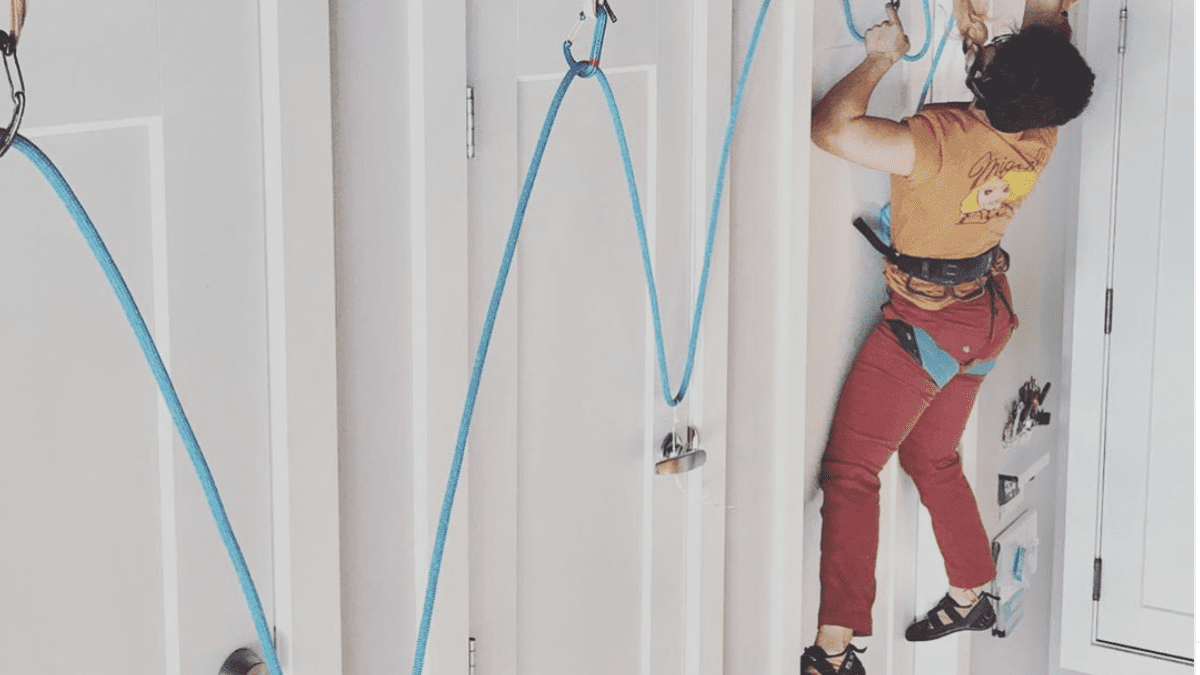The Power Cycle: Stay-At-Home Routine Day 7
Day 7 of a 28-day power-training cycle for the climber looking for strength at home.

Day 7:
With another rest day behind us, we will finish off the week with a fairly low intensity routine. Tomorrow we are staring down another day of hangboard training. Today, we are going to complete the other isometric exercises that we have worked on as they are relatively easy to recover from. Tomorrow, we will condition after we hangboard, making for a more challenging session. A rest day will follow tomorrow’s high intensity training.
Remember that the power faze is defined by joint stability and proper form. There is no point to completing an exercise with bad form when you could rest longer and give a better effort.
Warm Up:
- Warming up will likely differ between people, but these are a few good warm ups.
- Shoulder rolls
- Rotations: hold arms out perpendicular to the length of your body. Your arms should be parallel to the floor. Begin by rotating your wrists clockwise while your arms are straight. Then increase the rotation from the shoulders, maintain g your straight arms. Steadily increase the radius of rotation until your arms are wind milling, then reverse the direction.
- Hang on a bar and retract and relax your shoulders
- Complete a number of pull ups that would warm you up but not tire you out
Agonist muscles:
Once your biceps and shoulders are fully warm, or so warm that you could pull as hard as you would want, begin lock-offs.
Lock-Offs:
Once your offsets are complete, rest for five-minutes and begin your lock-offs.
Try and hold a lock-off with one arm bent at 90-degrees. If this is too challenging, complete the exercise in a full lock-off on one arm. If this is too difficult, complete ten negatives.
- Negatives: Hold a full lock-off with two arms at the top of the bar. Let one arm go and try and resist gravity with the other arm. You will either hold the lock-off or slowly descend to a straight arm position. The goal of a negative is to increase the time it takes to descend.
- Complete ten one-arm negatives on each side
- Lock Offs:
- If you are able to complete the lock-off, then…
- Aim to hold lock for 10 seconds. 3 sets a side.
Antagonist Muscles:
Push-ups: High Intensity
Complete 5, 7, or 10 repetitions depending on your skill level per exercise. Once that is established…
Complete the following exercises three times in a row for a total of nine sets. Your total push-up count for the day will be either 45, 63, or 90 repetitions.
- elbows-back push-ups: complete 5-10 then rest 30 seconds
- diamond push-ups: complete 5-10 then rest 30 seconds
- archer push-ups: complete 5-10 then rest 30 seconds
Core:
Front Levers:
To complete this exercise, hang from a bar and strive to pull into a front-lever-like position. A front lever is primarily defined by straight arms, a straight body, and the plane of that body as parallel to the floor. Remaining parallel to the floor is the most difficult part of the lever, so to train it we will pull into as “high” a lever as we are capable, and then we will hold it as hard as we can.
- Ideally, another person will hold the timer for you so that you can close your eyes and try super-hard. With an exercises like this, trying hard is essential.
- If you are unable to come anywhere close to maintain a lever, strive to do this exercise with a leg retracted
- Complete 6 front levers at 10 seconds a lever.
- Rest 3 minutes between each lever
Flexibility:
Hold each stretch for 15-30 seconds:
- Straddle Splits: This stretch is important to climbing as it increases a climber’s lateral flexibility for moves like stemming in a corner.
- Hamstring: keep your legs straight and bend down to your feet. Keep your back flat for an alternate version of this stretch.
- Hip-flexor: Flexible hip-flexors allow a climber to high-step.
- Quadricep: preventative against injury
- Triceps stretch: preventative against injury
- Shoulder stretch: increases mobility
- Calf stretch: increased heel-hooking mobility
Featured photo by Celeste Lozano.


